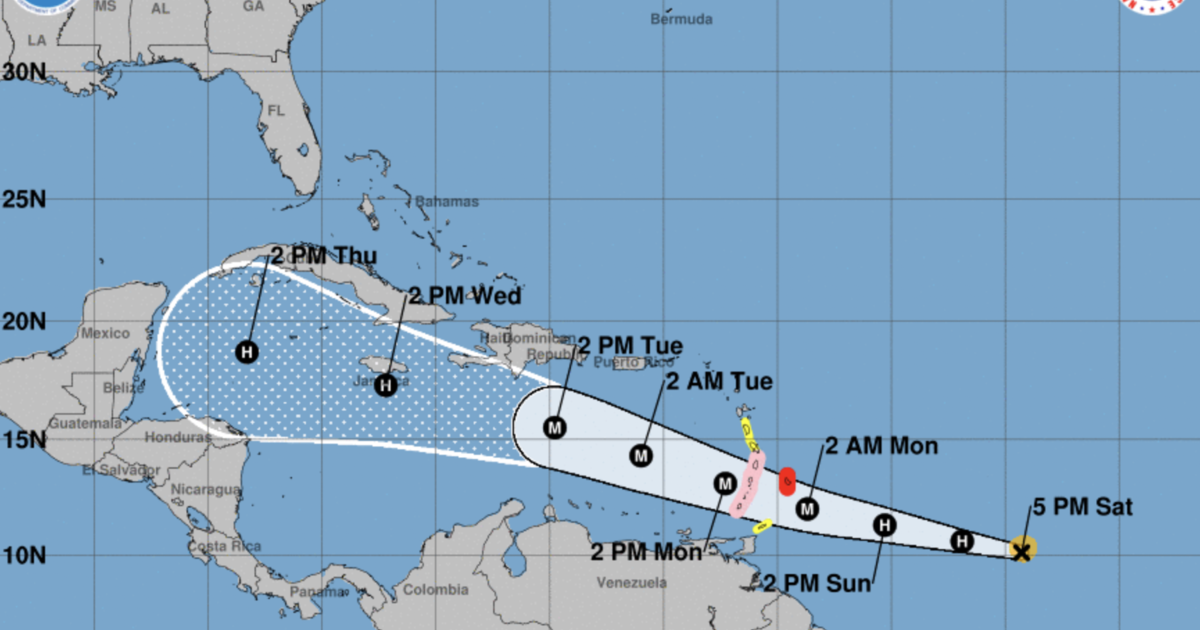Hurricane Beryl’s Path and Intensity: Hurricane Beryl Prediction

Hurricane beryl prediction – Hurricane Beryl is anticipated to follow a northeasterly path, intensifying as it approaches the coast. Factors influencing its movement include the steering currents and the interaction with other weather systems.
Hurricane Beryl, predicted to be a powerful storm, has the potential to impact Puerto Rico. Beryl Puerto Rico provides up-to-date information on the storm’s path and expected impact on the island. Stay informed and prepared for Hurricane Beryl’s arrival.
The current forecast predicts Beryl to strengthen into a Category 2 hurricane by the time it reaches the coast, bringing strong winds and heavy rainfall to the affected areas. A detailed map illustrating its forecasted trajectory is available from the National Hurricane Center.
Hurricane Beryl is forecasted to bring heavy rainfall and strong winds. To track its path, you can refer to tropical storm beryl spaghetti models. These models provide various possible tracks for the storm, helping predict its movement and potential impact.
Stay informed about Hurricane Beryl’s progression to ensure safety and preparedness.
Predicted Impacts
Hurricane Beryl’s impacts are likely to include:
- Strong winds, potentially causing damage to infrastructure and property
- Heavy rainfall, leading to flooding and potential mudslides
- Coastal erosion and storm surge, posing risks to coastal communities
Preparation and Safety Measures
Residents in the affected areas are advised to:
- Monitor weather updates and follow official instructions
- Secure loose objects and prepare emergency kits
- Consider evacuation if necessary
Potential Impacts and Preparations

Hurricane Beryl poses significant threats to affected areas. Potential impacts include widespread wind damage, flooding, and storm surge. It’s crucial for individuals and communities to take necessary precautions to ensure their safety and minimize damage.
Evacuation Plans
If evacuation orders are issued, it’s imperative to follow them promptly. Identify evacuation routes and safe zones in advance. Coordinate with family and friends to establish a communication plan in case of separation.
Emergency Supplies
Prepare an emergency kit containing essential items such as non-perishable food, water, first-aid supplies, medications, important documents, and a battery-powered radio. Keep the kit easily accessible in case of an evacuation.
Safety Precautions, Hurricane beryl prediction
Stay informed about hurricane updates and follow official instructions. Secure loose objects around your property, such as outdoor furniture and grills. Avoid driving through flooded areas. If caught in high winds, seek shelter in a sturdy building and stay away from windows.
Historical Comparisons and Climate Implications
:quality(70)/cloudfront-us-east-1.images.arcpublishing.com/cmg/AWHDX4GIS6ELRDN2KSNZFDACQU.jpg)
Hurricane Beryl is a significant storm, but it is not unprecedented. Throughout history, the region has witnessed numerous hurricanes of comparable intensity. Comparing Beryl to these past events can provide valuable insights into its potential impacts and help us better understand the evolving nature of hurricanes in the face of climate change.
One notable comparison is Hurricane Wilma, which made landfall in Florida in 2005. Wilma was a Category 5 hurricane with sustained winds of 185 mph. It caused widespread devastation, resulting in billions of dollars in damage and numerous casualties. Hurricane Beryl, while not as powerful as Wilma, shares some similarities in its track and projected impacts. By examining the similarities and differences between these two storms, we can gain a better understanding of the potential risks posed by Beryl.
Role of Climate Change
The increasing frequency and severity of hurricanes in recent years has raised concerns about the role of climate change. Scientists have established a clear link between rising global temperatures and changes in hurricane patterns. As the ocean warms, it provides more energy for hurricanes to develop and intensify. Additionally, rising sea levels can exacerbate the impacts of storm surge, leading to more severe flooding and coastal erosion.
Hurricane Beryl serves as a reminder of the urgent need to address climate change. By reducing greenhouse gas emissions and implementing adaptation strategies, we can mitigate the future impacts of hurricanes and protect our communities from the devastating consequences of these powerful storms.
Implications for Future Preparedness
The lessons learned from Hurricane Beryl and other recent hurricanes have important implications for future hurricane preparedness and mitigation strategies. By studying the behavior of these storms and understanding the role of climate change, we can develop more effective plans to protect lives and property.
Some key areas for improvement include:
- Enhanced early warning systems to provide timely and accurate information to coastal communities.
- Improved building codes and land-use planning to reduce the vulnerability of structures to hurricane damage.
- Investment in infrastructure, such as seawalls and storm surge barriers, to protect coastal areas from flooding.
- Public education and outreach programs to increase awareness of hurricane risks and promote preparedness.
By taking these steps, we can strengthen our resilience to hurricanes and ensure the safety of our communities in the face of future storms.